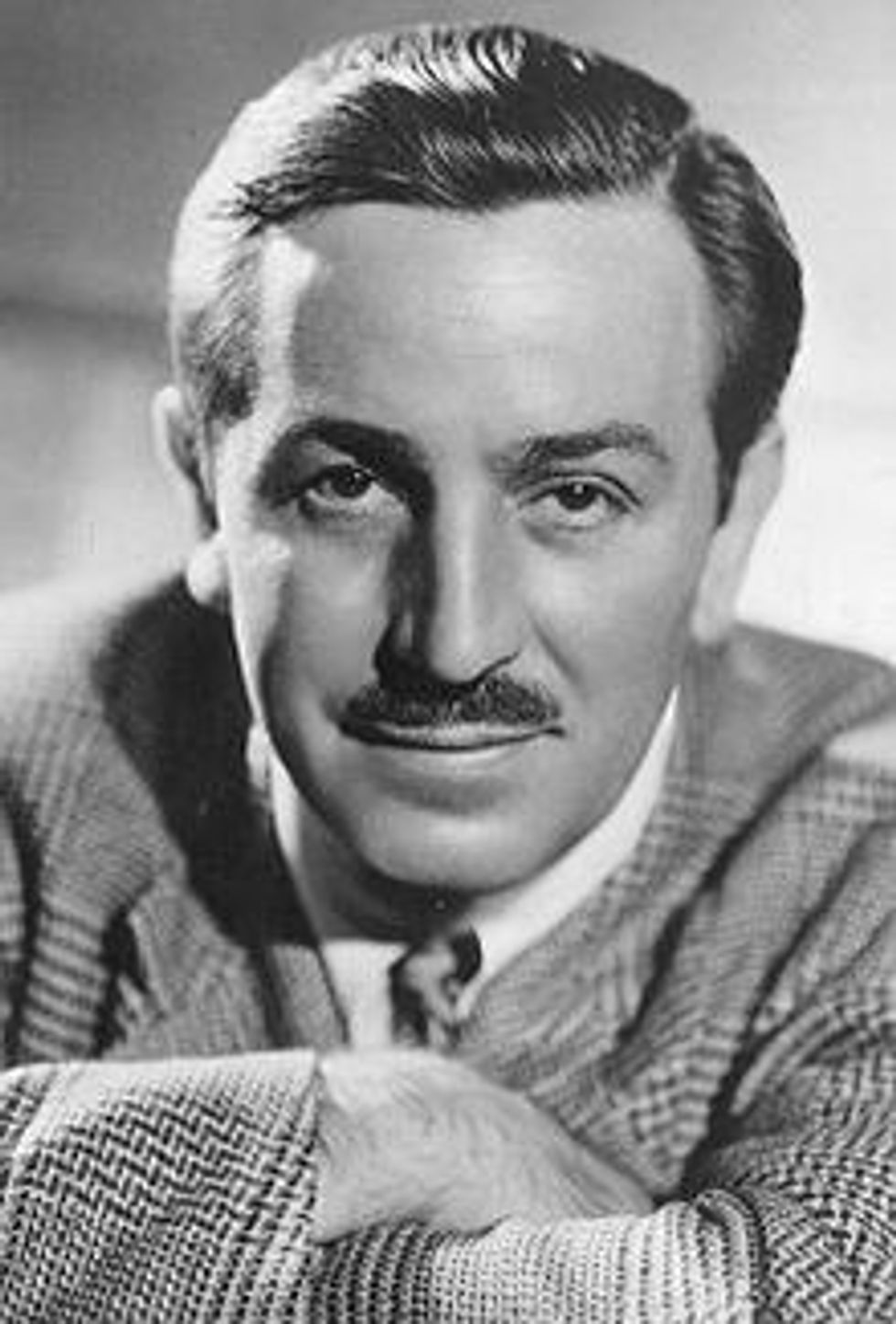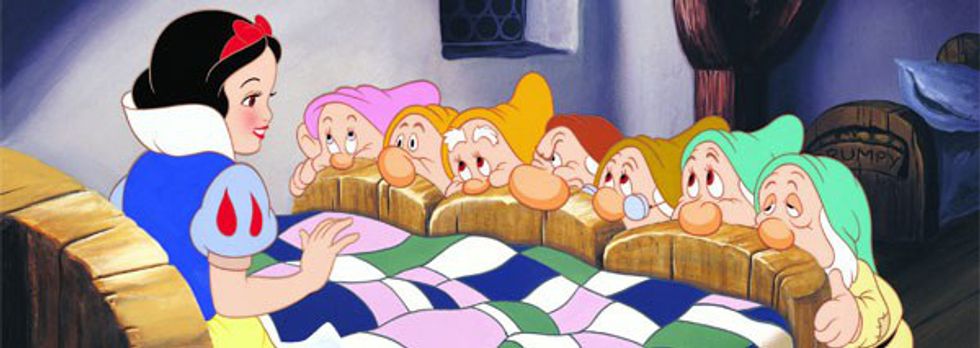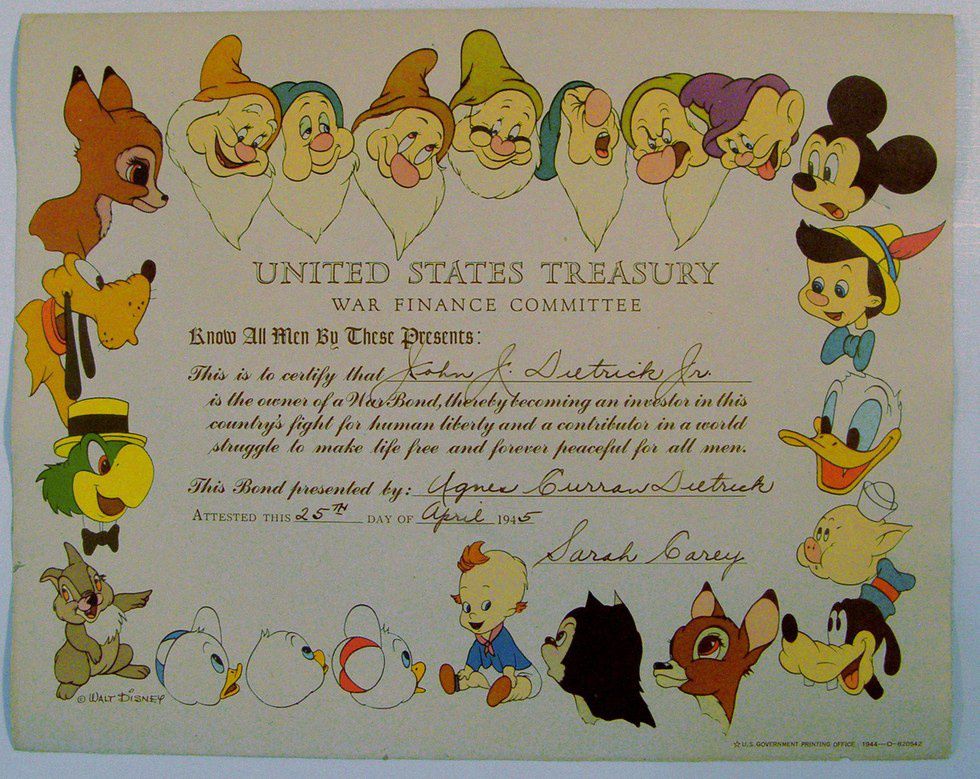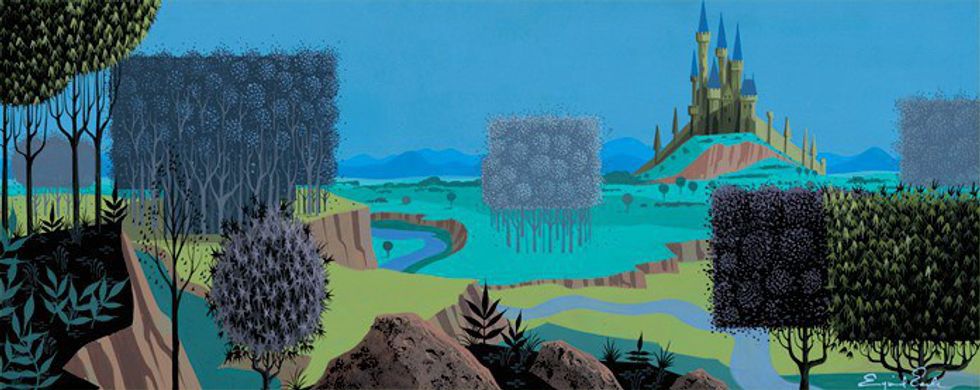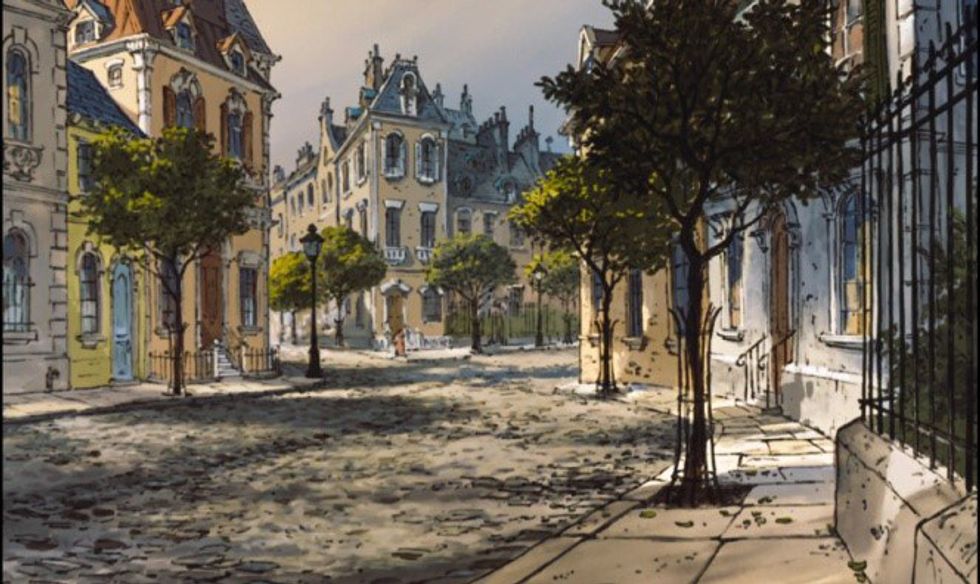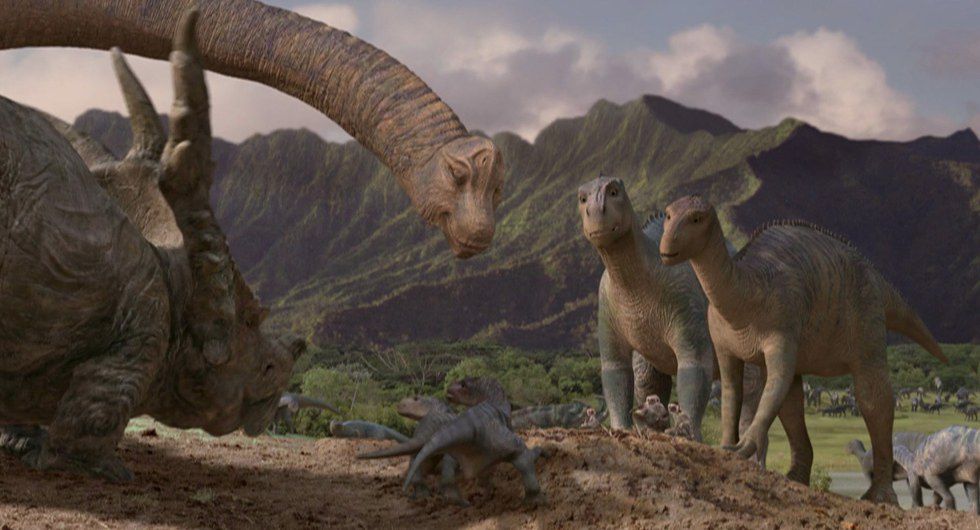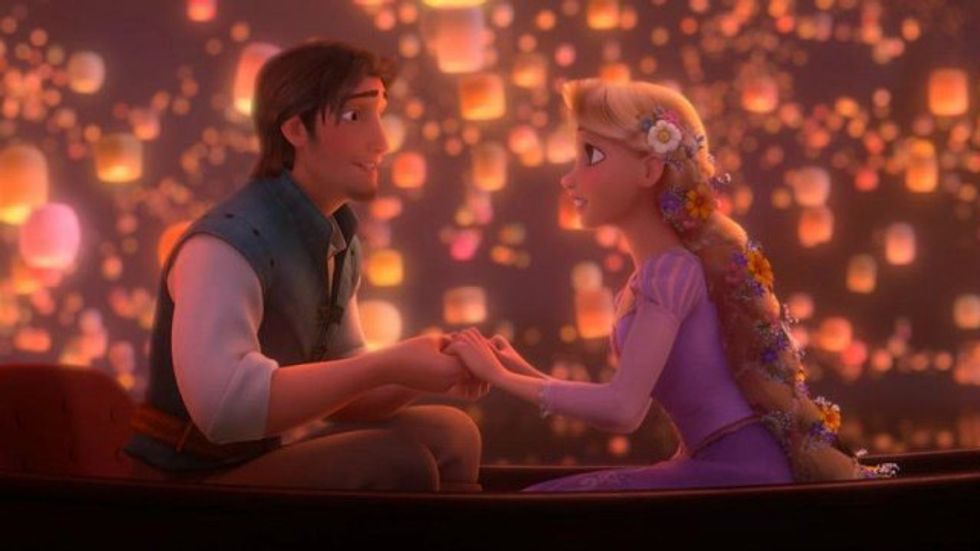As a kid I always loved movies, and no movies did it quite for me as Disney movies did. Whether they were old or new, there was something about Disney movies that just spoke to me. The music, the characters, the stories-- they all helped to shape some of my fondest childhood memories and are responsible for many of my interests and beliefs today.
SEE MORE: This Is The ICONIC Disney Sidekick You Are To Your BFF, According To Your Zodiac Sign
But what I always found most interesting is the history behind these films, how the time they came out influenced their themes and meanings. So today I'll be exploring just that-- the nine eras of Disney animations.
1923-1928: The Silent Era and the Origins of Disney
The history of Disney begins with the Silent Era. In 1923, Walt Disney, working for Laugh-O-Gram studios out of Kansas City, Missouri, created a short film called Alice's Wonderland, which would serve as the first of the Alice Comedies. After the company declared bankruptcy, Walt moved to Hollywood, where he and his brother Roy formed Disney Brothers Cartoon Studios.
They worked out a deal with Winkler Productions to produce the "Alice Comedies" and eventually, in 1926, moved their company to Hyperion Street, where it was renamed Walt Disney Studios. After the decline of the "Alice Comedies," Walt created his first-ever original character, Oswald the Lucky Rabbit, and produced 26 short comedies starring the character before a falling out with Charles Mintz, who had by 1928 taken over Winkler Productions. Legally, Oswald belonged to Mintz and his company, so he took the character and four of Disney's animators and started a new animation company, Snappy Comedies.
1928-1937: Pre-Golden Age And Mickey Mouse
The Pre-Golden Age saw Walt recovering from the loss of Oswald and also set the stage for Disney as we know it today. In 1928, Walt, in collaboration with Ub Iwerks, created a new character that he originally named Mortimer Mouse. However, his wife didn't like the name, so he renamed him Mickey (I think we can all agree this name is much better). Mickey made his first appearance in 1928 in a test screening of the short film called "Plane Crazy."
However, the film failed to pick up a distributor, so Walt went back to the drawing board and created "Steamboat Willie," which was released in 1928. The film was an immediate success due to the fact that it was the first cartoon to feature synchronized sound and established Mickey as the mascot of Disney.
After this, a series of Mickey Mouse cartoons were released. This series also saw the introduction of many Disney staple characters, such as Minnie Mouse, Pluto, and Goofy. Donald Duck, another iconic Disney character, first appeared in Disney's "Silly Symphonies," a series of animated short films that were popular for their innovative use of Technicolor. With this, Walt had successfully bounced back from the hardships of the Silent Era and set the stage for the Golden Age of Disney.
1937-1942: The Golden Age
The Golden Age of Disney began in 1937 with the release of "Snow White and the Seven Dwarfs." The film was the first full-length feature film to use traditional animation and was an immediate commercial success, establishing Disney as one of the leaders of animated filmmaking. Other films that were released during this time include "Pinocchio," "Fantasia," "Dumbo," and "Bambi." Although all of these films would go on to become considered classics, at the time of their release only "Snow White" and "Dumbo" were commercially successful. What made this time considered the Golden Age wasn't the commercial success of these films though, but rather the trends they created in terms of Disney filmmaking.
"Snow White" was the first of the fairytale-based movies that Disney is known for and established the “Disney Princesses," "Pinocchio" started the concept of taking well-known literature and turning it into a child-friendly film and Bambi explored the possibilities of making a movie through the eyes of a non-human character.
Other Disney staples such as exaggerated villains, the use of music and prominent, comedic sidekicks were first introduced during this time as well. Another key characteristic of the films of this time was the inclusion of many dark scenes, which were usually sandwiched between upbeat and light scenes in order to create a mood shift. A similar, toned down version of this techniques would also be used in later films.
1943-1949: The Wartime Era
With the U.S.'s entry into World War II, Disney Studios faced lower budgets and a smaller team of animators as it entered the Wartime Era. Also known as the Package Era, the films of this time included "Saludos Amigos," "The Three Caballeros," "Make Mine Music," "Fun and Fancy Free," "Melody Time," and "The Adventures of Icabod and Mr. Toad."
What made these films distinct from the Golden Age films is that instead of telling a single, continuous story, these films consisted of multiple short films within each. These films are largely ignored and widely unpopular, with fans criticizing them due to their lack of consistency and tone in each short. The Wartime Era also Disney Studios producing wartime propaganda, which included anti-Nazi commercials and flyers encouraging Americans to support the war.
1950-1967: The Silver Age and the Death of Walt Disney
Disney's Silver Age, also known as the Restoration Age saw the return of many of the trends set forth by the Golden Age of Disney. Films released during this time include "Cinderella," "Alice in Wonderland," "Peter Pan," "Lady and the Tramp," "Sleeping Beauty," "101 Dalmatians," "The Sword and the Stone," and "Jungle Book." What made these films distinct from its predecessors was the use of more ornate backgrounds and softer colors. Furthermore, the Silver Age also saw the use of lighter themes balanced with more complex characters, creating many of the well-known characters that are still considered fan-favorites today. "The Jungle Book" was the last film that Walt himself worked on before his death in 1966, and the movie's release marked the end of the Silver Age.
1970-1988: The Dark Age and the Decline of Disney
Hope you guys have a flashlight 'cos we're about to enter a dark place, or rather a dark age (see what I did there?). The Dark Age of Disney, also known as the Bronze Age, saw Disney Studios struggle to find their footing without Walt there to hold the reins. This was a time of trial-and-error in which the animators shied away from traditional storytelling tropes seen in the Golden and Silver Ages and instead shifted toward darker and more secular stories. Films released during this time include "The Aristocats," "Robin Hood," "The Many Adventures of Winnie the Pooh," "The Rescuers," "The Fox and the Hound," "The Black Cauldron," "The Great Mouse Detective," and "Oliver and Company." With the exception of "The Great Mouse Detective" and "Oliver and Company," which were both critically and commercially successful, most of these films only received little success, with The Black Cauldron being a box office flop.
These films lacked Walt's imagination and were criticized for only being intended to bring in money. The greatest criticism of these films was their departure from traditional animation and their use xerography. This saved both time and money, allowing animators to directly print their drawings onto cells. However, this process did have its limits and initially only black lines were possible using this method. As a result, films during this era are known as “Scratchy Films" because of the heavy black lines in their animation. While these films weren't initially successful upon release, many have gone on to become cult classics. Also, the Disney Dark Age helped set the foundation for the pinnacle of Disney animation.
1989-1999: The Disney Renaissance and Birth of Millennials
If you're a millennial like me, then most of your favorite Disney moments and films likely come from the Disney Renaissance. The Disney Renaissance saw a return to the musical fairy-tale storytelling seen in the Golden and Silver Age while at the same time expanding on many of the themes and techniques introduced in the Bronze Age. Films released during this time include "The Little Mermaid," "The Rescuers Down Under," "Beauty and the Beast," "Aladdin," "The Lion King," "Pocahontas," "The Hunchback of Notre Dame," "Hercules," "Mulan," and "Tarzan." These films were also the first films that Howard Ashman and Alan Menken worked on, both of whom are key elements to Disney's musical success.
The films during this time also had many important themes that would influence the current views of millennials; "Beauty and the Beast" and "The Hunchback of Notre Dame" taught us not to judge people by their appearances; "Mulan" and "Hercules," taught us the importance of making sacrifices; and "Aladdin" taught us that there's nothing wrong with being ourselves and that the circumstances of our birth don't have to dictate who we grow up to be.
2000-2009: Post-Renaissance Era
Also known as the Second Dark Age, the Post-Renaissance Era was unique in that whereas previous eras were marked with having a common theme about them, this era was defined as a time in which Disney tried their hands at new methods in storytelling, similar to the Bronze Age. Films from this time include "Fantasia 2000," "Dinosaur," "The Emperor's New Groove," "Atlantis: The Lost Empire," "Lilo and Stitch," "Treasure Planet," "Brother Bear," "Home on the Range," "Chicken Little," "Meet the Robinsons," and "Bolt." These films explored new storytelling elements marketed towards kids and more mature themes marketed towards the kids that had grown up during the Disney Renaissance that were now teenagers and young adults.
While Lilo and Stitch was a commercial success, spawning several sequels and a T.V. show, most of the other films released during this time only received moderate success. This was in part due to the fact that they also had to contend with huge movie franchises like "Harry Potter" and "Lord of the Rings." Despite not doing as well as their predecessors, the films released during the Second Dark Age are well known for their innovation. "Dinosaur" was the first Disney film that used CGI animation, which would become a popular element of this era's successor.
2010-Present: Marvel, Star Wars, and the Second Disney Renaissance
Just as a Renaissance followed the first Disney Dark Age, a Second Disney Renaissance followed this Second Dark Age. Also known as the Revival Era, this era marked a return to the fairy-tale storytelling seen in the Gold and Silver Ages as well as the first Disney Renaissance. During this time, Disney bought the rights to Marvel and Lucasfilm, meaning they no longer had to worry about trying to market their films toward older audiences since the MCU and Star Wars did that for them. Films released during this time include "Princess and the Frog," "Tangled," "Winnie the Pooh," "Wreck It Ralph," "Frozen," and "Big Hero 6." Like the first Disney Renaissance, the Second Disney Renaissance built off several things introduced by its predecessor. "Tangled," for example, used the CGI techniques first used by "Dinosaur." Most of the films of this era have been met with great popularity, with "Frozen" being the highest grossing animated film of all time, and "Big Hero 6" is the highest audience-rated film of this time period.
And there you have it, the nine eras of Disney animations. I hope you guys enjoyed reading about the history of Disney and its growth throughout the years. I personally loved writing this article and look forward to writing more like this one.




